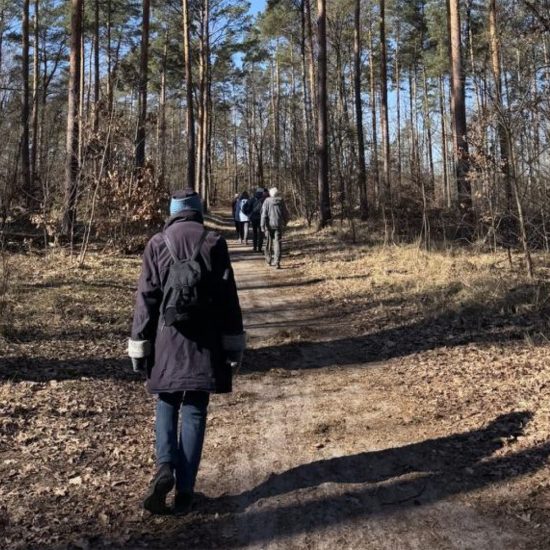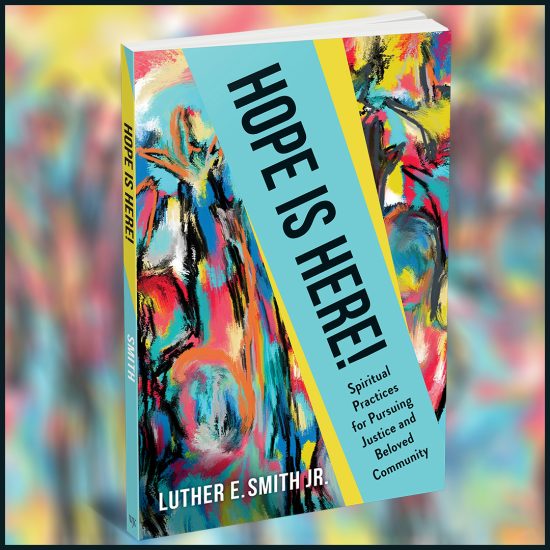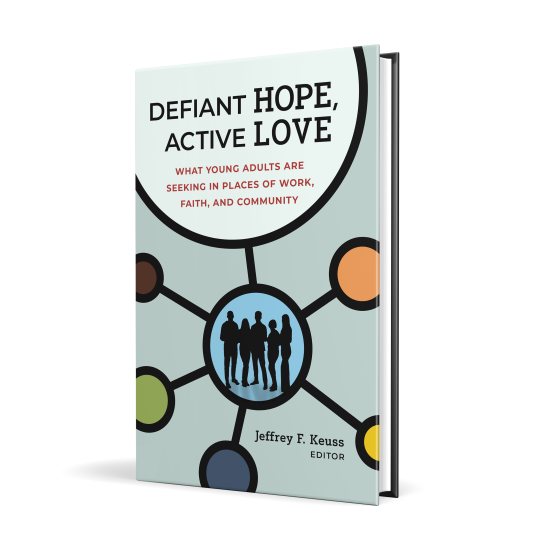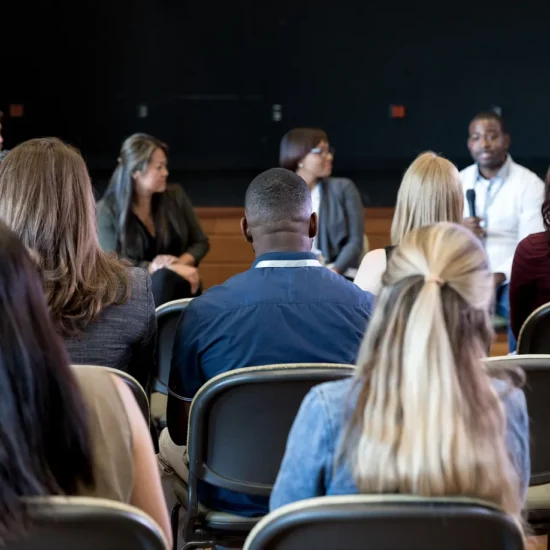
WASHINGTON (RNS) — At the First Baptist Church of Suitland, just across the District of Columbia border in Maryland, a typical Sunday service includes coffee and pastries, warm greetings, and a sermon delivered by Pastor Quintin Few Sr., in an auditorium with a full band and speaker system.
At the side of the stage as the service proceeds are two people translating Few’s words into American Sign Language, to help Deaf and hard of hearing parishioners. They are part of a program at the church known as the Holy Hands ministry.

(Photo by RDNE Stock project/Pexels/Creative Commons)
With their hands flowing from one sign to the next, the interpreters bring the pastor’s words to life, which can be no easy task. “One missed sign or one missed concept can prevent others from working out their service salvation on that day,” said Bronte Stewart, who founded the program with the church’s leadership and music director in 2014.
Because Stewart sees every service as an opportunity to strengthen one’s faith, the ministry, she believes, offers more than access. It is inspired by a shared conviction among members that including anyone who might walk through the church’s doors is a fundamental part of living their Christian values.
“We were intentional in making sure that the Deaf community was integrated into the life of the church and to see them as part of us, irrespective of their disability,” said Few. “I think that is so important when you are ministering to any community.”

Pastor Quintin Few Sr. preaches at First Baptist Church of Suitland, Md., Oct. 6, 2024, while being interpreted by Holy Hands ministry members with American Sign Language, inset. (Video screen grab)
Churches that offer interpreted services are still relatively rare in the United States. The Deaf Bible Society, a nonprofit that works to make the Bible accessible to Deaf people, lists nearly 30 houses of worship in the state that are “Deaf Churches” (led by Deaf people) or “Interpreted Churches.” That’s likely an undercount — First Baptist doesn’t appear on its list — but with more than 5,000 churches in the state, it’s most likely that only a tiny minority provide ASL services. Meanwhile, estimates put the share of Americans who are Deaf or hard of hearing at 11 million, or about 3.6%.
At FBCS, the Holy Hands ministry was born out of a conversation that took place in January 2014, when a Deaf woman named Sharon Ligon walked into FBCS, interested in joining the church.
“There was a woman there explaining how the Sunday school works,” said Ligon, who was in a group with other prospective members but could not hear what was being said. A church member noticed Ligon had not been speaking much and approached her.
“He said, ‘Are you deaf? And I said, ‘Yes, I am.’ And so that’s when he called Bronte to come over,” Ligon recalled.
Stewart, a longtime church member, said: “I knew basic sign language. I wouldn’t even say at a ‘101’ level. It was probably like a level 99,” explained Stewart.

Bronte Stewart signs in a video. (Courtesy image)
Others in the church encouraged Stewart to learn more sign language in hopes she could become an ASL interpreter, but she was hesitant. “You know, when the Lord taps you on your shoulder, sometimes you miss it,” she said. “I thought to myself: ‘Oh no, not me, Lord. You couldn’t possibly be calling on me to do this task.’ I didn’t hear that.”
But not long afterward, one of First Baptist’s ministry directors approached her to say the church would send her to school to learn ASL if she would interpret at services. “I said, ‘Oh, OK, if the Lord’s going to equip me, yeah, I’m going,’” said Stewart, who then enrolled in ASL classes at a local community college.
Becoming a certified ASL interpreter can take years of rigorous examinations, and interpreters are required to meet standards set by the Registry of Interpreters for the Deaf, a body that provides guidance for those interpreting in various settings, including religious ones.
RID’s Standard Practice Paper, a document that “provides a framework for basic and respectable standards,” outlines the specialized skills needed for interpretation in religious settings. “Knowledge of a source language of an original text found in scripture such as Arabic, Hebrew, Latin or others would enhance the overall interpretation,” it points out. “It is ideal for the interpreter to have familiarity with the sacred text; however, the interpreter may need to work with an English translation.”
Due to the intimate nature of religious services, the Standard Practice Paper encourages interpreters to “enhance their skills by working with a religious mentor who is a seasoned and/or certified interpreter before working independently.”

Michael and Sharon Ligon. (Courtesy photo)
Stewart would go on to receive a bachelor’s degree in interpretation studies and gain certification, but in the early days of the Holy Hands ministry, Stewart and Ligon worked to better understand the Bible.
“If she wanted to know about certain signs, she would find words, and then we would talk about how they were meant to be communicated. She would ask me, ‘What’s the sign for this?’And I would show her, and then we would keep going from there,” said Ligon.
Eventually the two collaborated to teach a course at the church for members interested in learning ASL.
Stewart remains steadfast in her goal to interpret in church because of three core values: “community, culture, language, that’s what’s playing out in my head, those three things,” she said. “Before understanding the culture, you need to know that this language is communication access for that community. Without those three things, your message is not going to come across clearly in a religious setting.”

Terri Latimer signs for the Holy Hands ministry during a service at First Baptist Church of Suitland, Md. (Courtesy photo)
There are now seven church members working in the Holy Hands ministry, carrying on Stewart’s legacy of service, though Stewart has turned leadership over to a member of the congregation named Sharon Ford. A hearing woman who joined Holy Hands early on, Ford witnessed the moment where Ligon and her husband were baptized in the church, as Holy Hands members interpretated.
“They came to know the Lord and have a relationship with him. They joined the church and were baptized here,” she said. “So the congregation got to see that we were doing God’s work by spreading the gospel and making sure that everyone could understand it regardless of any differences.”
In reflecting on her journey, Stewart often punctuates her sentences with the phrase: “Look at God.”
“God has laid out a plan for his people, and every time something happens in my life or the lives of others, I hearken back to His promises. He will never leave us nor forsake us. He always lights our pathways, and so anytime God shows up, I give him the glory, and I say, ‘Look at God.’”
This article was produced as part of the RNS/Interfaith America Religion Journalism Fellowship.






